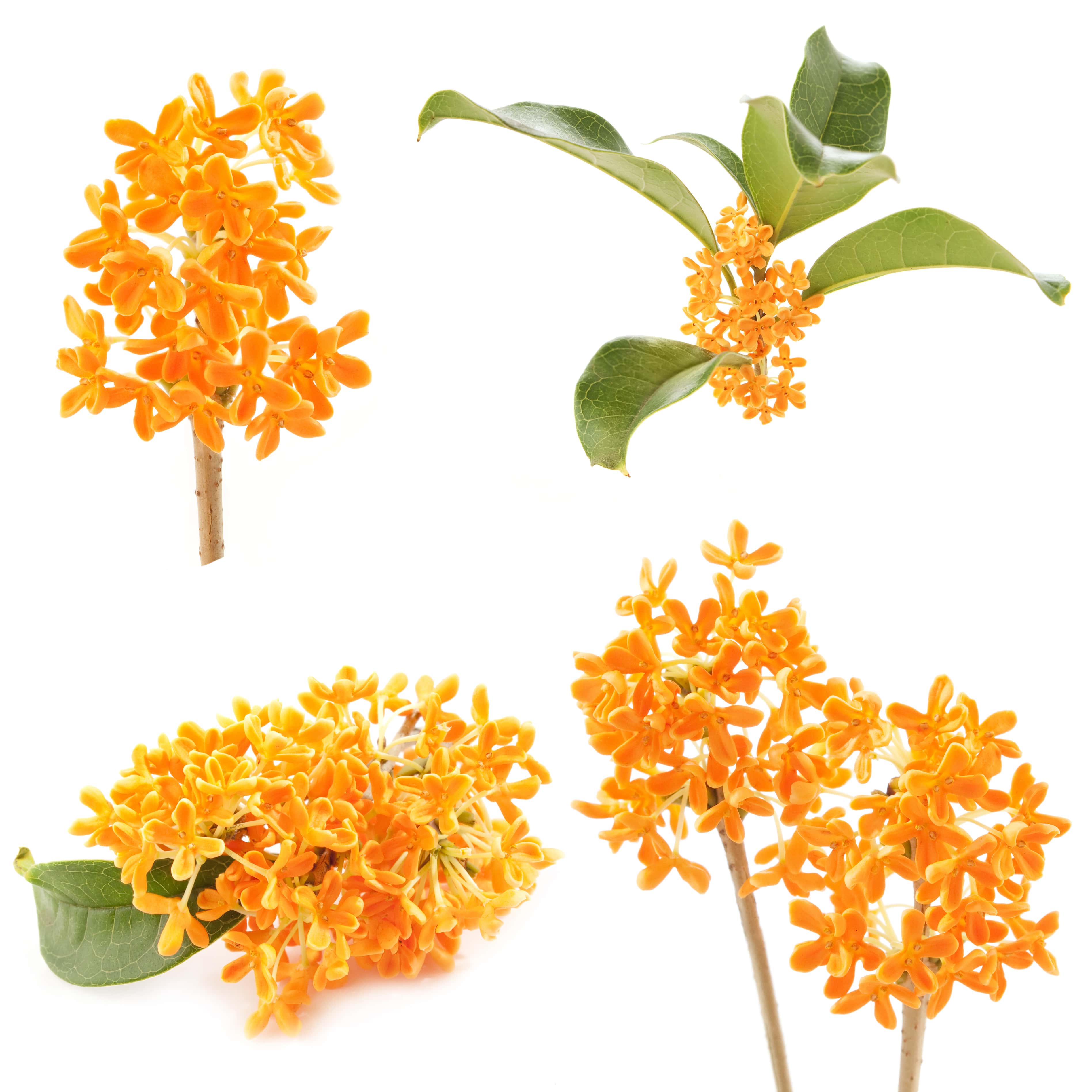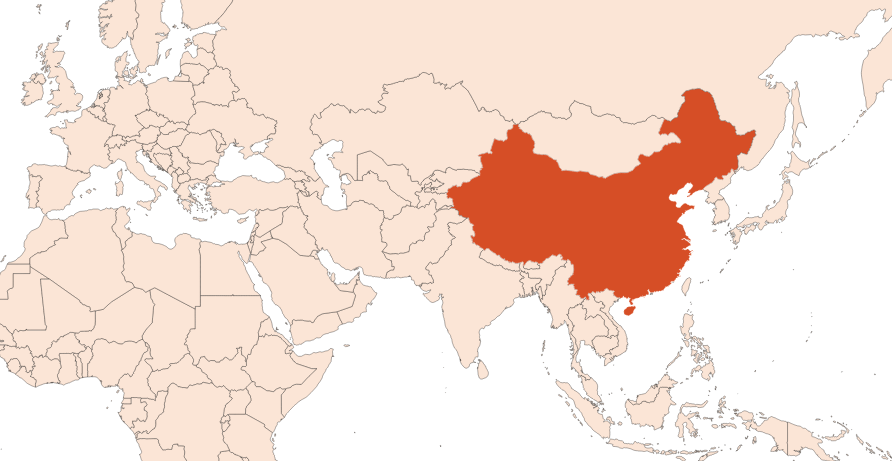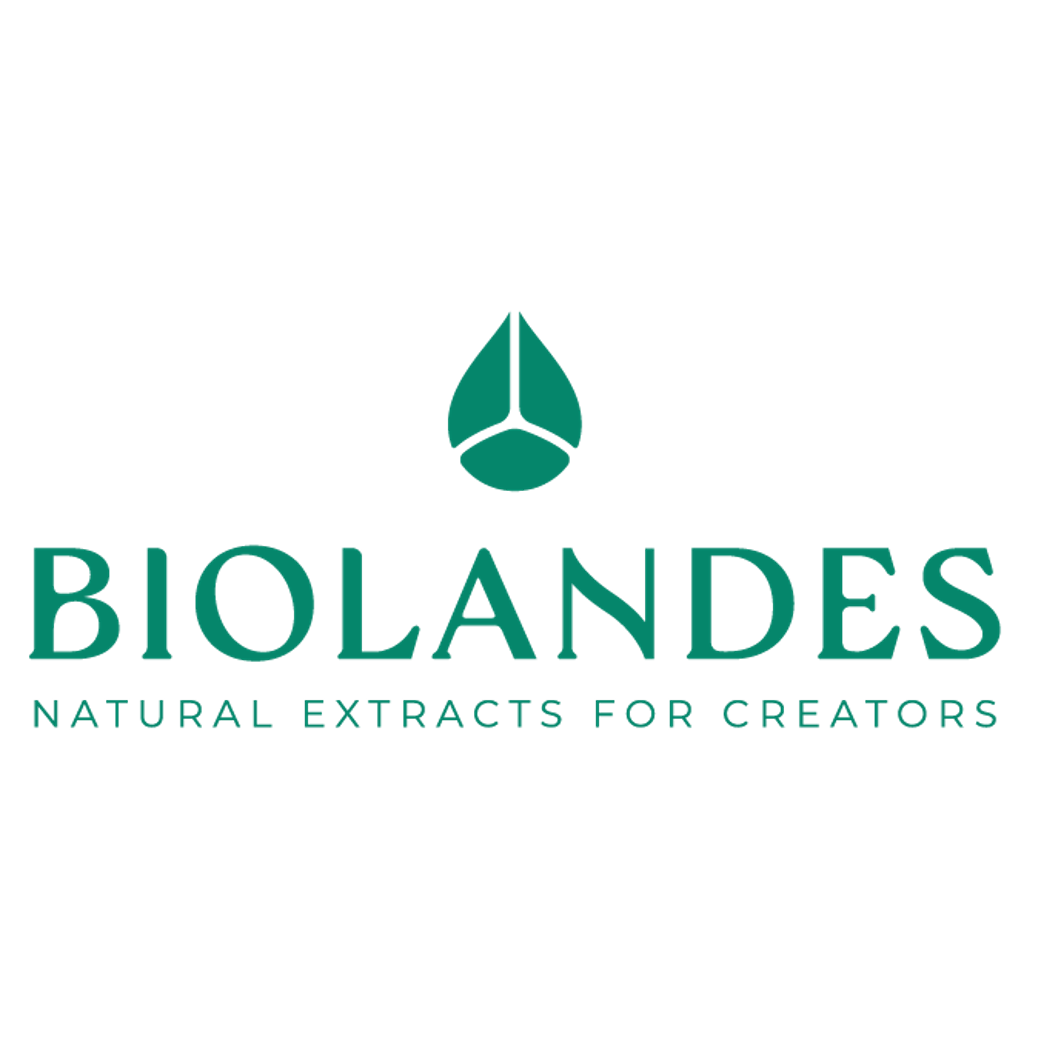Osmanthus Absolute
Naturelle
Fruity > Yellow Fruits > White Flowers > Honeyed

Crédits photo: ScenTree SAS
Latin name :
Osmanthus fragrans
Botanical profile :
Osmanthus is the flower of a tree of the Oleaceae family, like the olive tree, and of the genus Osmanthus.
Geographic origin :
Originally from southeast China and the Himalayas, osmanthus is now widely grown in China (mainly on the edge of rice fields in the provinces of Chunking, Hsintu and Chengtu), Japan and Thailand
Chemotypes :
The genus Osmanthus contains about 30 species.
Osmanthus fragrans is the only one used in perfumery, and contains two varieties: var. aurantiacus and var. thunbergii.
Other common species may, however, be mentioned:
Osmanthus americanus, grown in Virginia and Texas.
Osmanthus yunnanensis, native to the Yunnan province in China.
Osmanthus delavayi, native to the Chinese provinces of Guizhou and Sichuan.
Osmanthus heterophyllus, native to Japan and Taiwan.
Osmanthus fragrans is the only one used in perfumery, and contains two varieties: var. aurantiacus and var. thunbergii.
Other common species may, however, be mentioned:
Osmanthus americanus, grown in Virginia and Texas.
Osmanthus yunnanensis, native to the Yunnan province in China.
Osmanthus delavayi, native to the Chinese provinces of Guizhou and Sichuan.
Osmanthus heterophyllus, native to Japan and Taiwan.
Extraction process :
Osmanthus is a tree that can measure 3 to 12 meters in height. It has the same look as an olive tree and is also part of his botanical family. The propagation of a crop can be done by sowing seeds as osmanthus grows berries rather quickly this way although the culture yield will be lower, or by an asexual production that requires a treatment of the plant beforehand.
To obtain a good crop yield, osmanthus should be grown at the north of a sub-tropical region, in a mountainous region, with a high sun exposure and on a very fertile soil. The flowers are picked by hand during the month of December in China. They must be picked during the day, as the flowers wilt quickly. Before the extraction, the flowers are immersed in brine to improve their preservation.
An extraction of the fresh flowers with hexane allows to collect a concrete after evaporating the solvent. The solvent is collected and recycled to extract other flowers, while the exhausted flowers are thrown away. Then, the concrete is diluted in alcohol and submitted to a glazing process at a temperature gradient of 140 °F to 32 °F in order to precipitate the waxes of the concrete. The absolute is obtained by filtration and evaporation of the alcohol.
The overall extraction yield is about 1.2%.
In China, about only 1 ton of concrete is produced each year, which explains the cost of this raw material.
To obtain a good crop yield, osmanthus should be grown at the north of a sub-tropical region, in a mountainous region, with a high sun exposure and on a very fertile soil. The flowers are picked by hand during the month of December in China. They must be picked during the day, as the flowers wilt quickly. Before the extraction, the flowers are immersed in brine to improve their preservation.
An extraction of the fresh flowers with hexane allows to collect a concrete after evaporating the solvent. The solvent is collected and recycled to extract other flowers, while the exhausted flowers are thrown away. Then, the concrete is diluted in alcohol and submitted to a glazing process at a temperature gradient of 140 °F to 32 °F in order to precipitate the waxes of the concrete. The absolute is obtained by filtration and evaporation of the alcohol.
The overall extraction yield is about 1.2%.
In China, about only 1 ton of concrete is produced each year, which explains the cost of this raw material.
Major Components :
Linolenic Acid (15-20%)
Linoleic Acid (≈9%)
Palmitic Acid (≈9%)
Beta-Ionone (≈8%)
Linalool Oxide (≈8%)
Oleic Acid (≈7%)
DihydroBeta-Ionone (≈6%)
Alpha-Ionone (≈6%)
para-Methoxy Phenylethyl Alcohol (≈2%)
Linoleic Acid (≈9%)
Palmitic Acid (≈9%)
Beta-Ionone (≈8%)
Linalool Oxide (≈8%)
Oleic Acid (≈7%)
DihydroBeta-Ionone (≈6%)
Alpha-Ionone (≈6%)
para-Methoxy Phenylethyl Alcohol (≈2%)
- Uses in perfumery :
- Adds a fruity-apricot and exotic note to women's perfumes.
- Other comments :
- The absolute is composed of many molecules but the ionones and the damascones give it its typical features.
As osmanthus is the only specie in the family of olive trees whose flowers are extracted in perfumery, it is often nicknamed ''fragrant olive ''. - Volatility :
- Heart/Base
- Appearance :
- Orange to red liquid
- Stability :
- Solubility issues in perfumes
Stable oil in perfumes and in diverse functional bases - Price Range :
- €€€€€
- Aromatherapy :
Informations provided below are taken from reference works in aromatherapy. They are given for information purposes only and can not constitute medical information, nor engage the responsibility of ScenTree.
Data not available.

Crédits photo: ScenTree SAS
- EINECS number :
- 92347-21-2
- FEMA number :
- 3750
- Allergens :
- Linalool - D-Limonene - Geraniol - Citronellol - Eugenol - Iso-Eugenol - Farnesol
- IFRA :
- This ingredient is restricted by IFRA
- Annexe I :
- Some regulated synthetic ingredients are found in nature and in certain proportions in natural ingredients. This presence in nature has to be taken into account when calculating limits of use recommended by the IFRA. In case you do not know these concentrations, you can use the ones estimated by the IFRA. Here they are :
- Annexe I :
- Some regulated synthetic ingredients are found in nature and in certain proportions in natural ingredients. This presence in nature has to be taken into account when calculating limits of use recommended by the IFRA. In case you do not know these concentrations, you can use the ones estimated by the IFRA. Here they are :
| List of regulated compounds contained in this ingredient | ||
|---|---|---|
| Regulated ingredient name | CAS N° | Estimated Concentration |
| Geraniol | 106-24-1 | 1,2 |
| Coumarin | 91-64-5 | 0,02 |
| Eugenol | 97-53-0 | 0,07 |
| List of regulated compounds contained in this ingredient | ||
|---|---|---|
| Regulated ingredient name | CAS N° | Estimated Concentration |
| Geraniol | 106-24-1 | 1,2 |
| Coumarin | 91-64-5 | 0,02 |
| Eugenol | 97-53-0 | 0,07 |
To learn more about IFRA's standards : https://ifrafragrance.org/safe-use/library
ScenTree is solely responsible for the information provided here.




